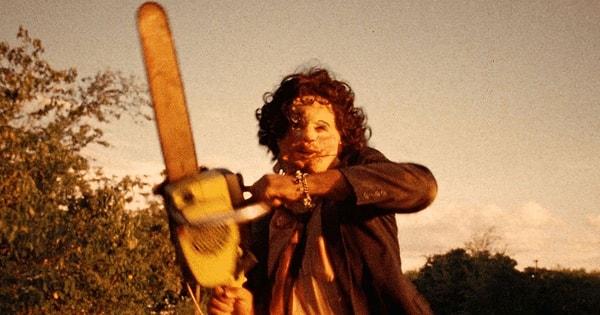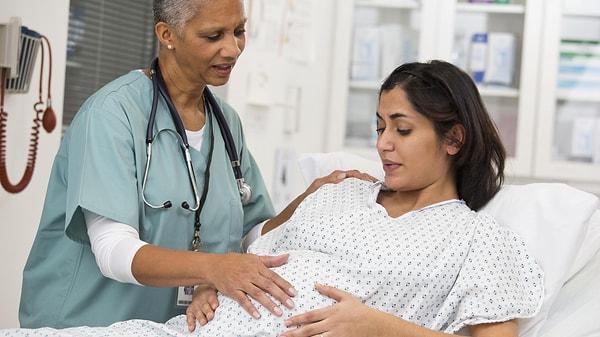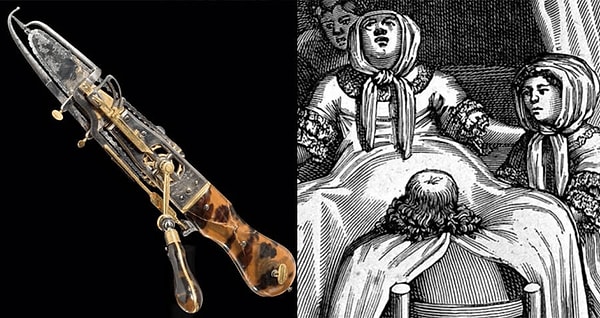 Why Were Chainsaws Invented
Why Were Chainsaws Invented
When you hear the word chainsaw, cutting trees or the horrifying massacre in Texas are the first things you get in mind as it has sharp blades and thrilling noise. A tool that you would not think could save and deliver life.

The reason behind the invention of the chainsaw could be the weirdest and most gruesome thing you could ever imagine. This will make you clench your knees together after reading this article.
Gruesome reason behind the invention of the chainsaw
A chainsaw machine tool can easily destroy and cut hard materials such as trees and wood. However, during the 1700 hundreds, chainsaws are entirely used for a different purpose - childbirth tools for doctors.

Moreover, before the advancement of the health system that we know, today used common practices such as caesarian to deliver the fetus to save both mother and the child. Fetuses during 1700 had to pass through the birth canal.
Babies will inevitably get trapped if they are too big or in the breech position when they lie feet first in the uterus rather than in the typical head-first position.

In addition, the surgical procedure known as a 'symphysiotomy' was used in the 18th century to make room for a newborn if it couldn't pass through or become trapped in the pelvis. Also, the procedure could save both mother's and child's life.
Chainsaw used by doctors might not look like the chainsaw we used today for cutting firewood and felling trees at all. The tool broadly looks like a large knife with a chain around it. Doctors would not have to put on safety equipment before using this old chainsaw.
What was a symphysiotomy?
Through studies and the advancement of technology, the healthcare system has made improvements in its treatments, procedure, and tools to supplement the need of people. Therefore, doctors can easily treat many diseases in a short period.

Child labor is one of the most horrifying things to perform, especially if you are pregnant, due to the painful procedure and tools you must undergo to deliver your child to life. Symphysiotomies are a procedure that uses a chainsaw to cut bones to create space for your child.
Instead of performing the caesarian that we know today, the symphysiotomies procedure needs to perform on pregnant women during birth. A symphysiotomy involves slicing through the ligaments and cartilage of the pelvic joint to expand it and enable uncontrolled delivery of the baby.

Moreover, pregnant patients had no other option but to agree to perform symphysiotomies despite the risk - high risk of infection, pain, bladder injury, and even long-term walking difficulty.
Since 1597, surgery has been the most well-known treatment for labor obstruction. Still, as procedures and hygienic standards advanced, the danger of maternal death from a caesarian section dropped, leading to a decline in the treatment's use in the late 20th century.
Who invented chainsaw
During the 1700s, saving both the lives of the mother and child was difficult for the healthcare system, especially if the fetus was stuck or in a breech position. Therefore, Scottish doctors came up with a tool to help them deliver a fetus safely yet brutally for the mother.

Symphysiotomies treatment was initially rather violent, done with a knife, making it incredibly unpleasant and messy. Later, in 1780, John Aitken and James Jeffray, two Scottish physicians, invented an instrument to cut the pelvis.
Two Scottish doctors devised a tool with rotating blades around the knife-shaped tool. This idea led to the creation of the first chainsaw. Despite being more successful than using a knife, it was difficult and risky, preventing some surgeons from using it. Additionally, it had a long-lasting impact on the mothers.
Years later, a young man from a medical family named Bernhard Heine, who had spent most of his life learning alongside his orthopedic uncle Johann Heine had developed a brand-new innovation. He pursued both orthopedic and medical studies.
Bernhard Heine invented a tool caled ostertome or bone saw. The tool that can easily operate one hand to cut through bones. In addition, it contained a chain of razor-sharp blades coiled around a piece of metal the size of a kitchen knife. A crank handle operated it.

Years later, a young man from a medical family named Bernhard Heine, who had spent most of his life learning alongside his orthopedic uncle Johann Heine had developed a brand-new innovation. He pursued both orthopedic and medical studies.
Bernhard Heine invented a tool caled ostertome or bone saw. The tool that can easily operate one hand to cut through bones. In addition, it contained a chain of razor-sharp blades coiled around a piece of metal the size of a kitchen knife. A crank handle operated it.
Chainsaws in modern time
During the successful introduction of the tool in the healthcare sector, industrial companies acknowledge the device's effectiveness in cutting complex objects.

Therefore, this gave them the idea that it could cut other materials where the timber business sees an opportunity of using the same tool. As a result, the first chainsaw came up to cut trees, increasing business output materials.
Moreover, with the advancement of technology, doctors stop the usage of a chainsaw as a medical tool due to the health risk they provide to mothers.
Keşfet ile ziyaret ettiğin tüm kategorileri tek akışta gör!


Send Comment